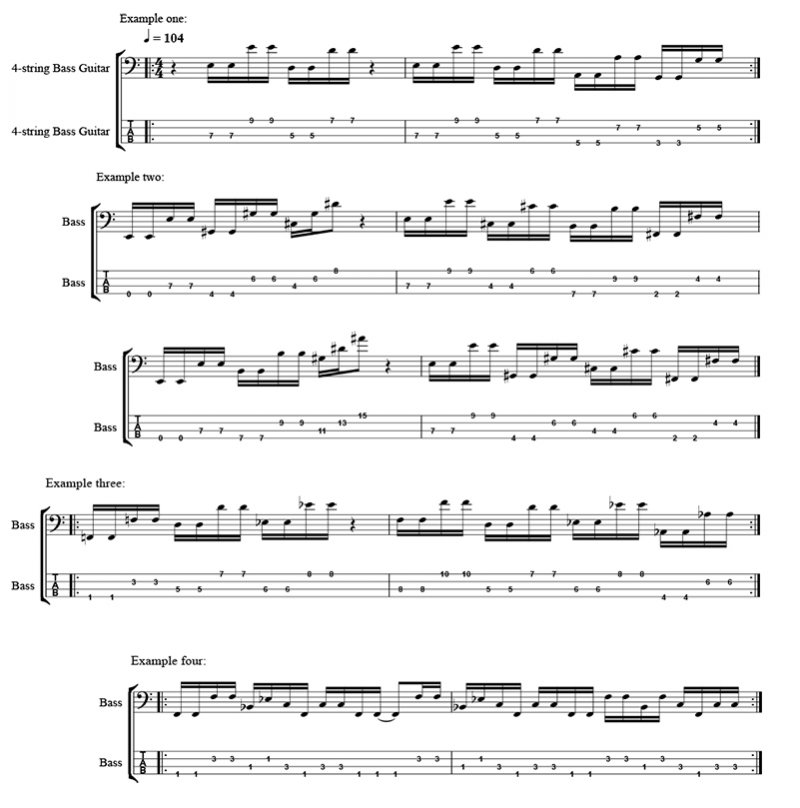Deep Thinking: Jaco Pastorius
Deep Thinking: Jaco Pastorius
Back in February, I had an accident that every musician dreads – I cut the tendon and nerves that control my left index finger. (Never leave a rug curled up so you can trip over it and crush a glass into your palm, that’s the best advice you’ll ever get!)
Fortunately, the wonderful surgeons at Dunedin Public Hospital stitched it back together (around 30 stitches in all) and the physios have got my hand working again, despite my best efforts to overdo the exercises I have been given.
Once I started playing again, I selected a few easy lines to get the finger back into action and gradually increased the difficulty level for both hands (because my right hand had been out of action as well).
I started work on several fusion tunes that I have played over the years, one of which was Weather Report’s River People from the album ‘Mr. Gone’ (1978).
This line was played by Jaco Pastorius on fretless bass guitar (a Fender Jazz Bass that he customised by pulling the frets out, filling the slots with wood filler, and then applying several coats of boat varnish!) and Joe Zawinul on an Oberheim synthesiser, and it requires alternate string picking in the picking hand for bass.
As most of the line consists of octaves, the picking hand plays notes on strings with one muted string between them (hence ‘alternate’ and not ‘adjacent’, where the strings are next to each other). River People is mainly centred around E mixolydian (E, F#, G#, A, B, C#, D, E), but it modulates to F mixolydian (F, G, A, Bb, C, D, Eb, F) around half way through.
If you are starting to get into Jaco’s wonderful playing, this is a good tune to start with, although it is best to play it slowly so as to make it accurate, as there are a few difficult phrases.
Each octave consists of pairs of semiquavers and you will need to do a fair amount of moving around the neck, which is why it’s best to start slowly. The opening bar starts with crotchet rests on beats one and four and this phrase is followed by a semiquaver octave pattern of E, D, A and G (a minor third in E mixolydian).
In Example two, the octave pattern starts on low E and moves to a G# octave that is followed by a C#add9 group of notes (C#, G# and D#) played as two semiquavers and a quaver. This is followed by a whole bar of octaves using E, C#, B and F#. The low E phrase is then repeated (E to G#) but this time you have to move right up the neck to play G#, D# and A# (again, this is why I suggest you take it slowly at first).
Example 3 moves to F and underpins the solos. The octave bass line starts with a low F moving up to D and then Eb, (in other words, F mixolydian), although the descending line in the next bar ends on an Ab octave, again implying F minor.
Example 4 is my personal favourite part of the tune and the figure is great for warming up your hands at a sound check if they are cold. This part of the tune is played between frets 1 and 3 and consists of semiquavers from the F mixolydian scale.
This figure is a mixture of alternate and adjacent picking and is probably the inspiration for Norman Watt–Roy’s bass line on Ian Dury’s Hit Me With Your Rhythm Stick.
Robert Trujillo has made a fascinating documentary of Jaco’s life, playing, and all the bassists he influenced – it’s well worth seeing. Have fun with this tune and the NZM interweb will feature more Deep Thinking bass lines soon!
Dr Rob Burns is an Associate Professor in Music at the University of Otago in Dunedin. As a former professional studio bassist in the UK, he performed and recorded with David Gilmour, Pete Townsend, Jerry Donahue, Isaac Hayes, Sam and Dave, James Burton, Ian Paice and Jon Lord, Eric Burdon and members of Abba. He played on the soundtracks on many UK television shows, such as Red Dwarf, Mr Bean, Blackadder, Not the Nine O’Clock News, and Alas Smith and Jones. Rob is a member of Dunedin bands Subject2change and The Verlaines.


